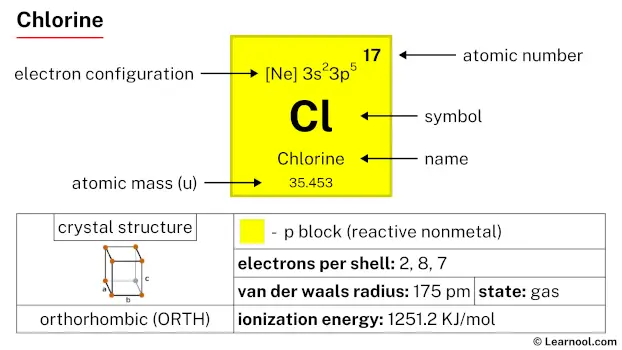
Chlorine (Cl) is a chemical element of the periodic table, located in the group 17 and the period 3, and is having the atomic number 17. It is a pale, greenish-yellow gas, whose name comes from the Greek word “chloros”, which means greenish yellow. It is a reactive nonmetal and is the 19th most abundant element on earth. It is the second lightest halogen, after the fluorine element.
On periodic table
| group | ⇨ | 1 | 2 | 3 | 4 | 5 | 6 | 7 | 8 | 9 | 10 | 11 | 12 | 13 | 14 | 15 | 16 | 17 | 18 |
| period | ⇩ | ||||||||||||||||||
| 1 | 1 H 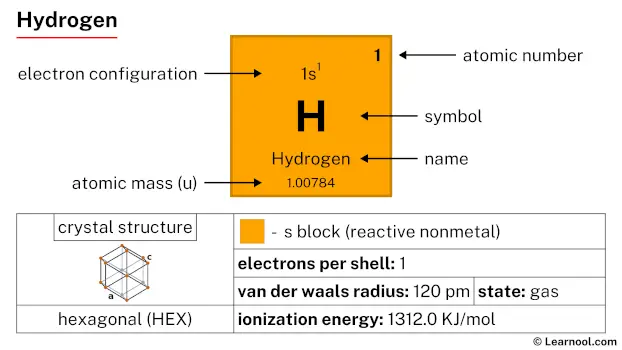 Hydrogen |
2 He  Helium |
|||||||||||||||||
| 2 | 3 Li  Lithium |
4 Be 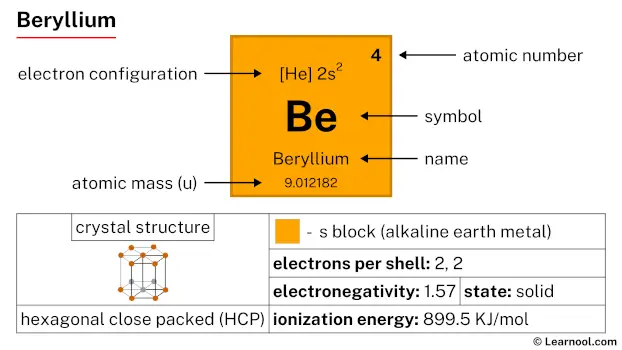 Beryllium |
5 B 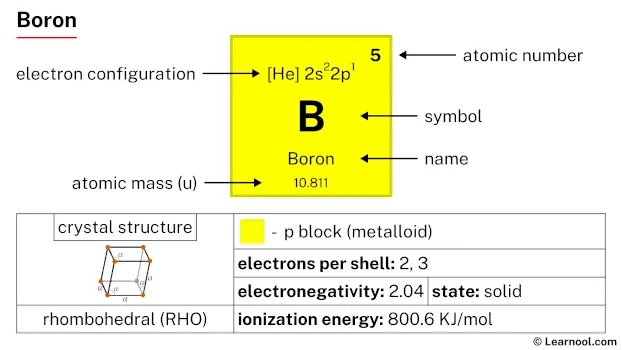 Boron |
6 C  Carbon |
7 N 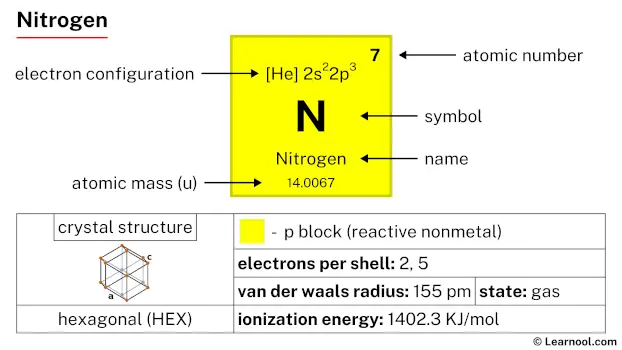 Nitrogen |
8 O 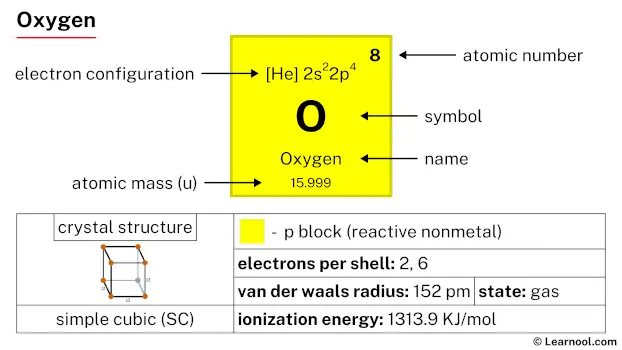 Oxygen |
9 F 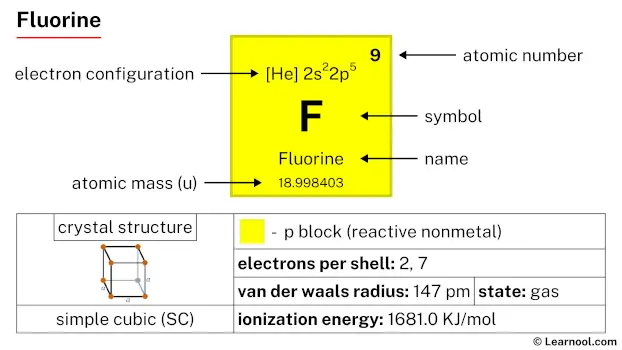 Fluorine |
10 Ne 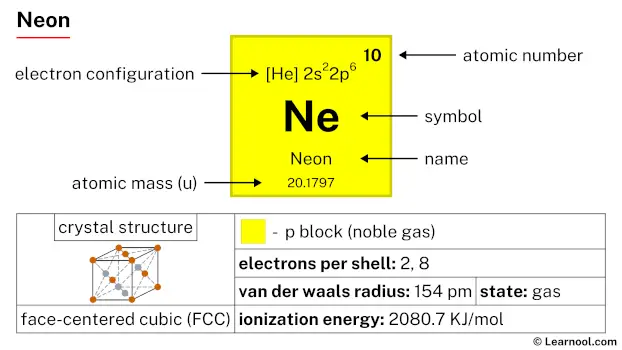 Neon |
|||||||||||
| 3 | 11 Na 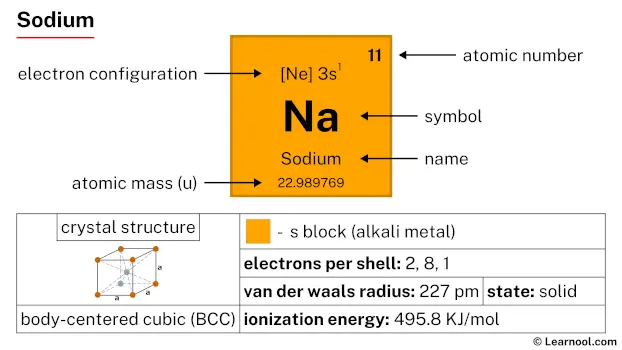 Sodium |
12 Mg 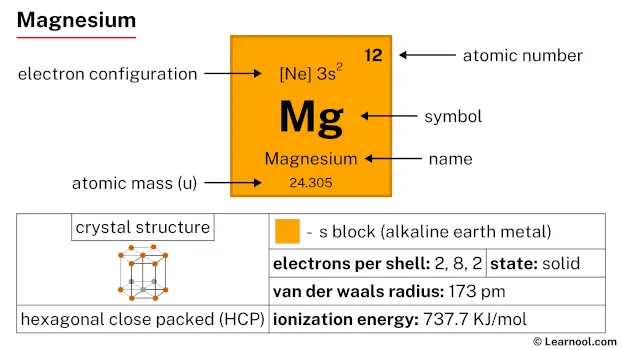 Magnesium |
13 Al  Aluminium |
14 Si Silicon |
15 P 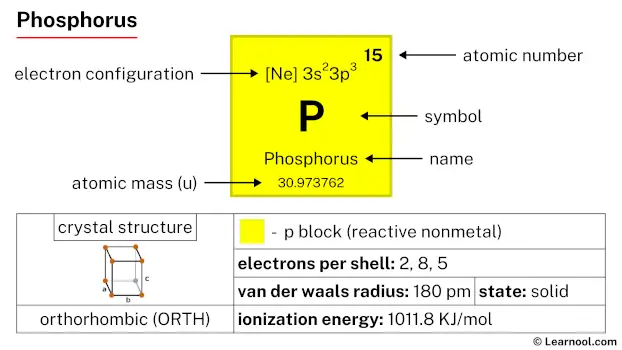 Phosphorus |
16 S 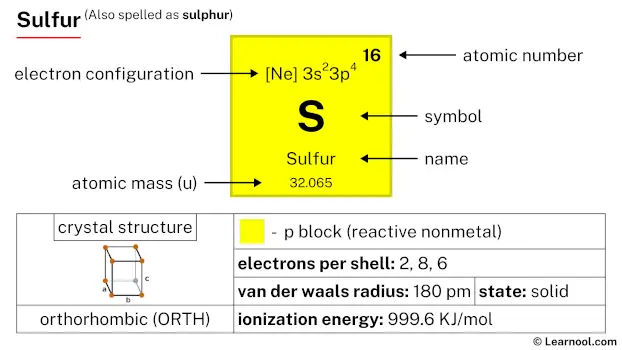 Sulfur |
17 Cl Chlorine |
18 Ar 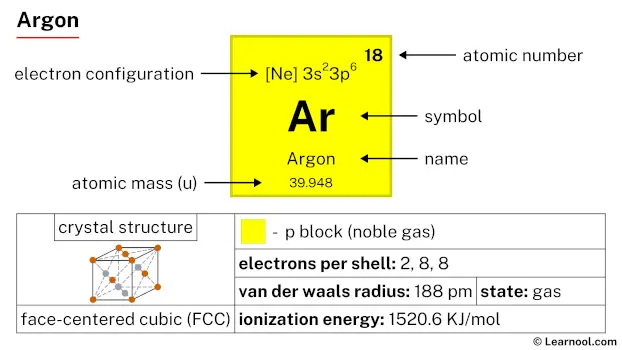 Argon |
|||||||||||
| 4 | 19 K 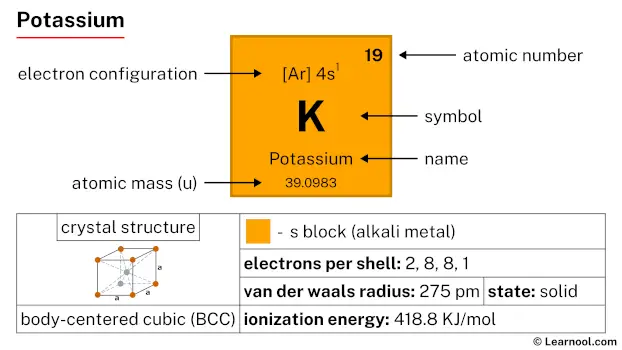 Potassium |
20 Ca 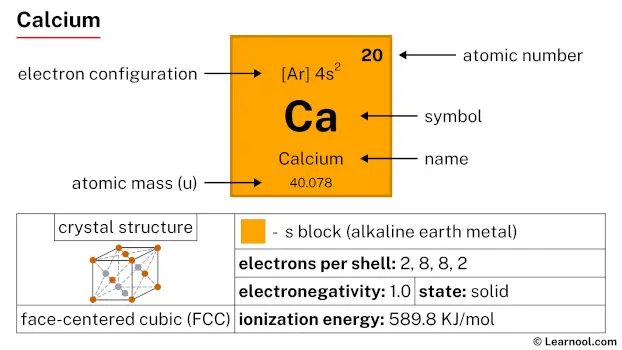 Calcium |
21 Sc 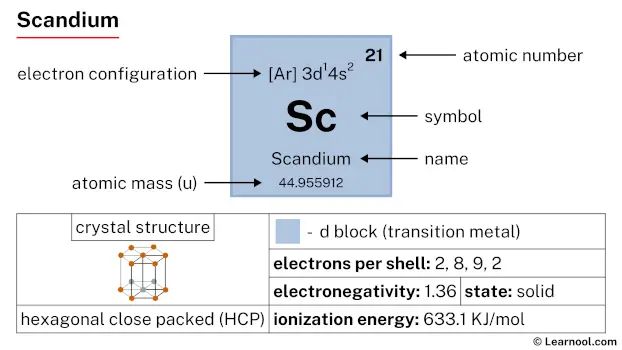 Scandium |
22 Ti 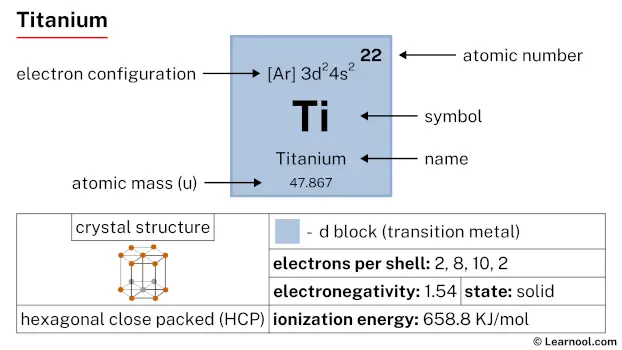 Titanium |
23 V 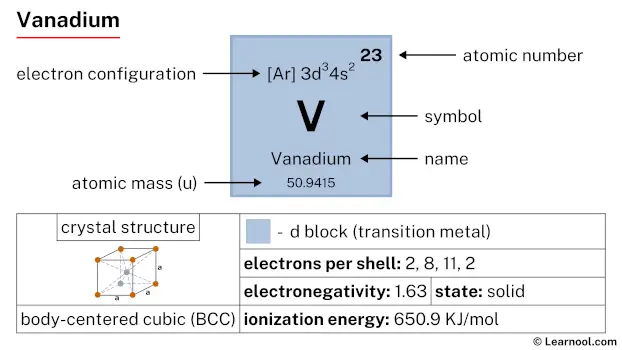 Vanadium |
24 Cr 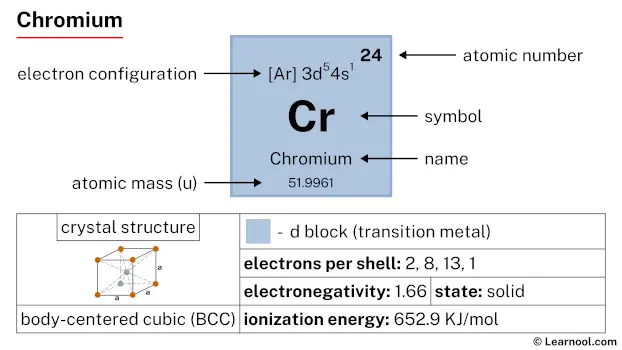 Chromium |
25 Mn 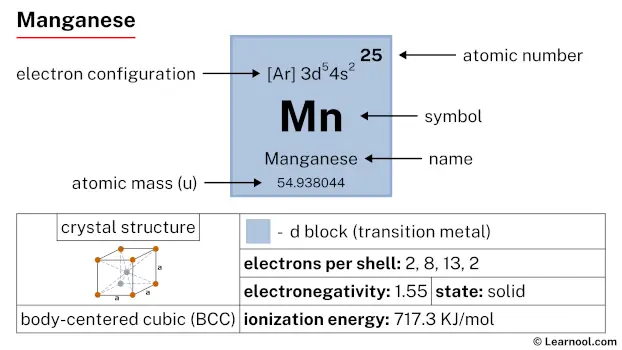 Manganese |
26 Fe 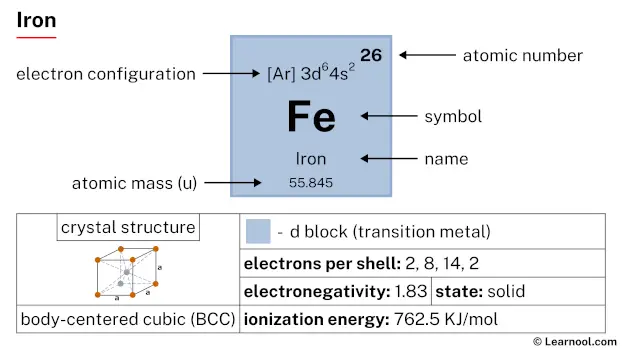 Iron |
27 Co 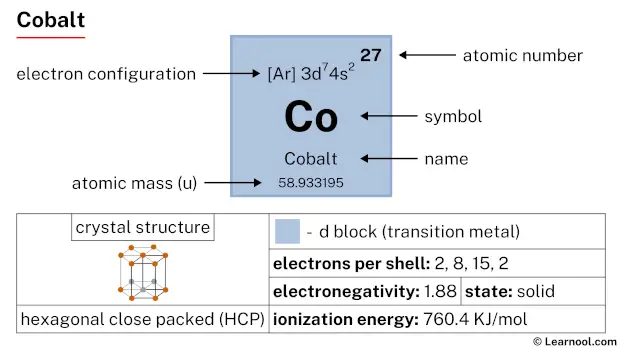 Cobalt |
28 Ni 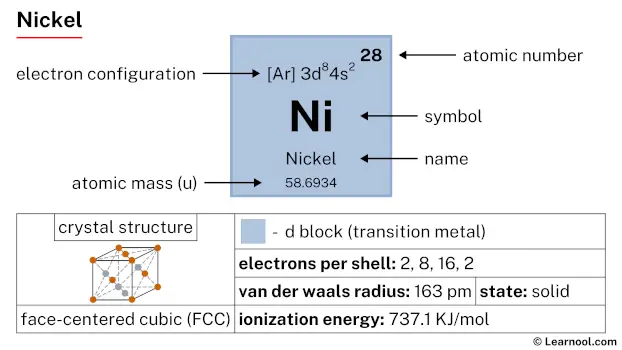 Nickel |
29 Cu 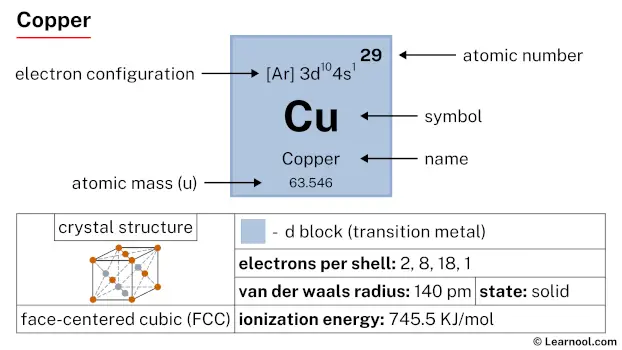 Copper |
30 Zn  Zinc |
31 Ga 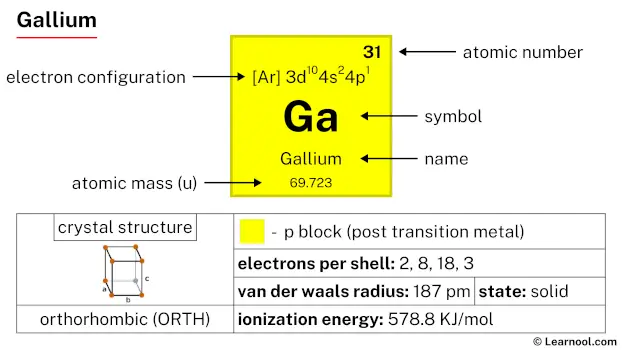 Gallium |
32 Ge 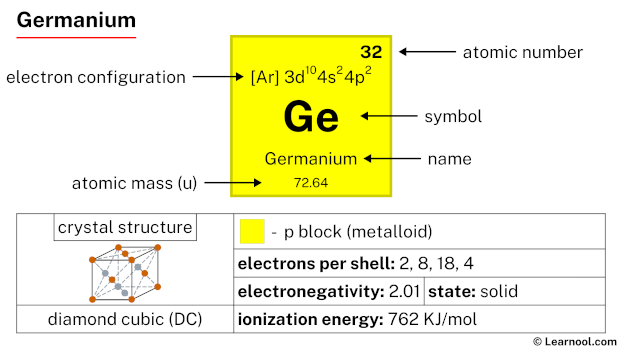 Germanium |
33 As 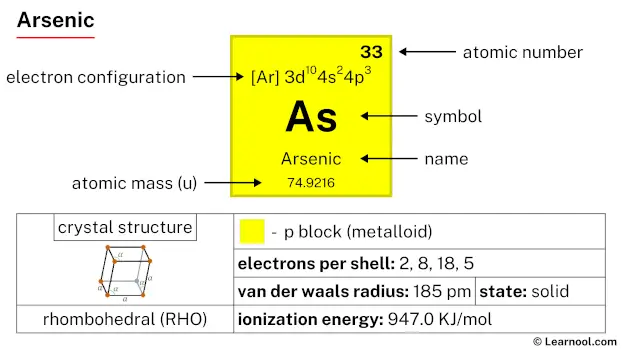 Arsenic |
34 Se 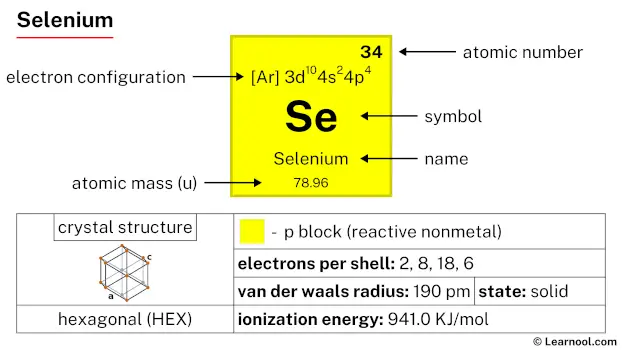 Selenium |
35 Br 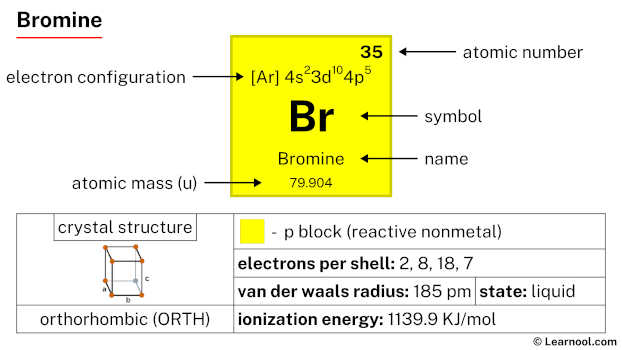 Bromine |
36 Kr  Krypton |
|
| 5 | 37 Rb 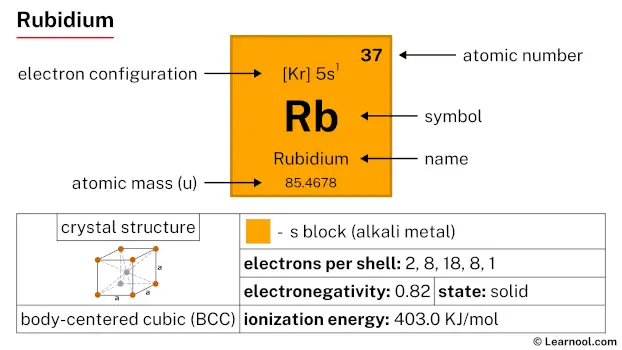 Rubidium |
38 Sr 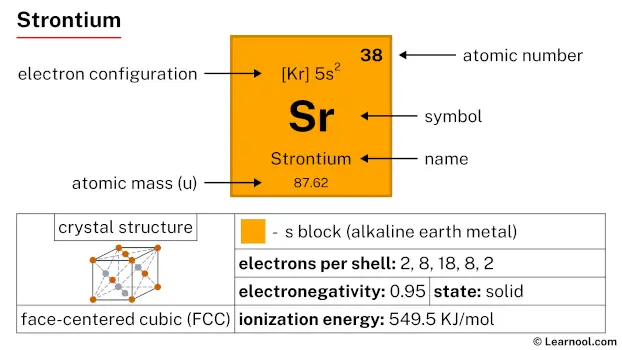 Strontium |
39 Y 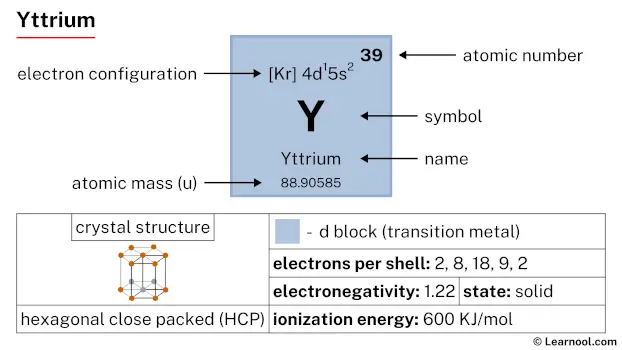 Yttrium |
40 Zr 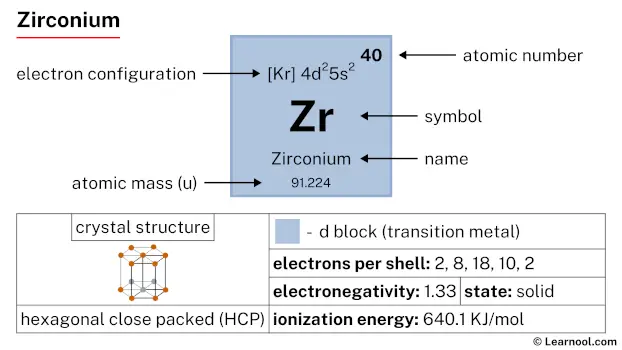 Zirconium |
41 Nb 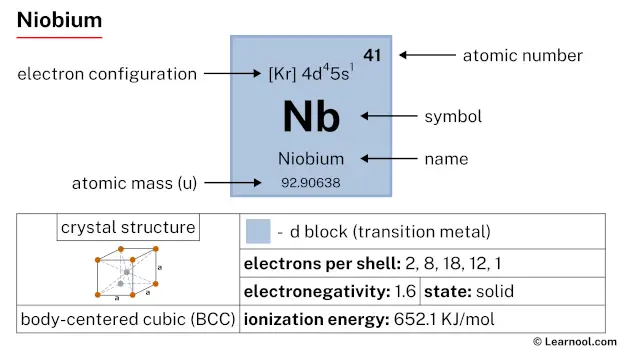 Niobium |
42 Mo 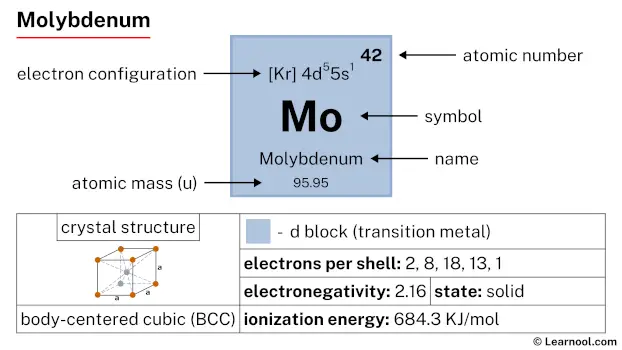 Molybdenum |
43 Tc 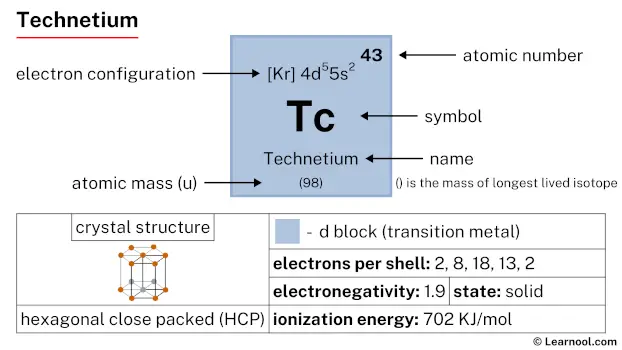 Technetium |
44 Ru 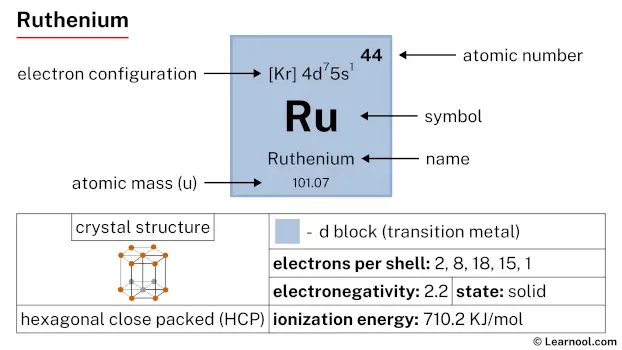 Ruthenium |
45 Rh 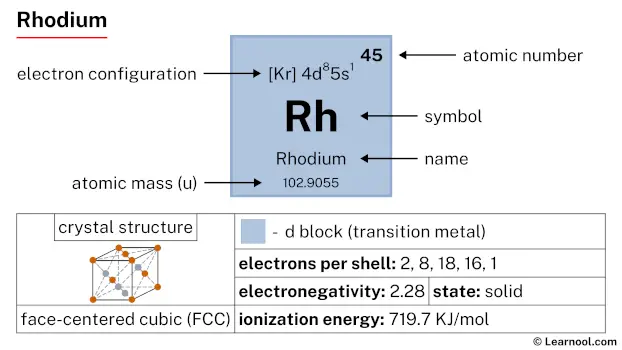 Rhodium |
46 Pd  Palladium |
47 Ag  Silver |
48 Cd 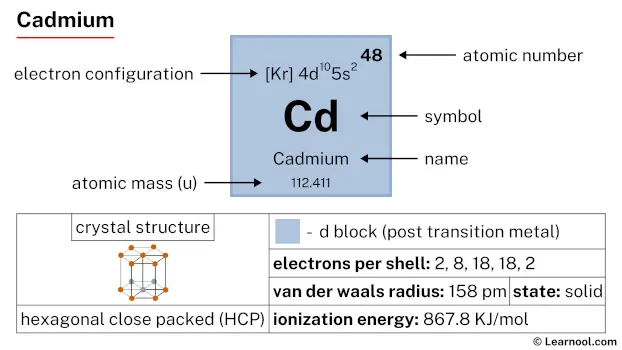 Cadmium |
49 In 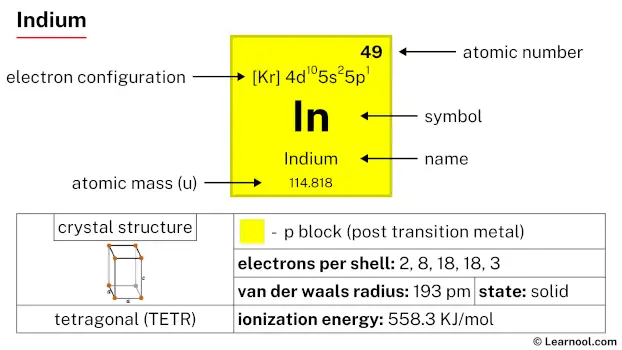 Indium |
50 Sn 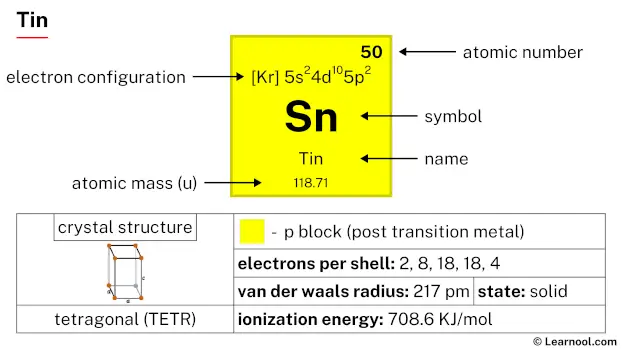 Tin |
51 Sb 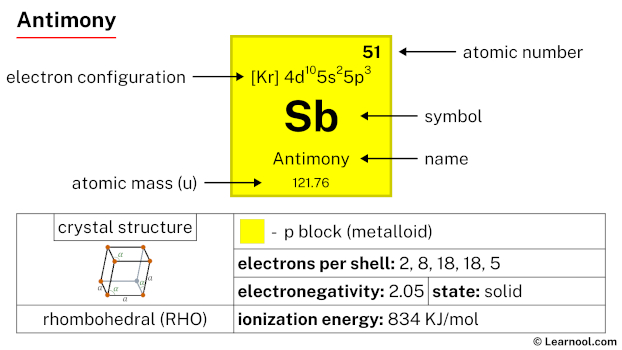 Antimony |
52 Te 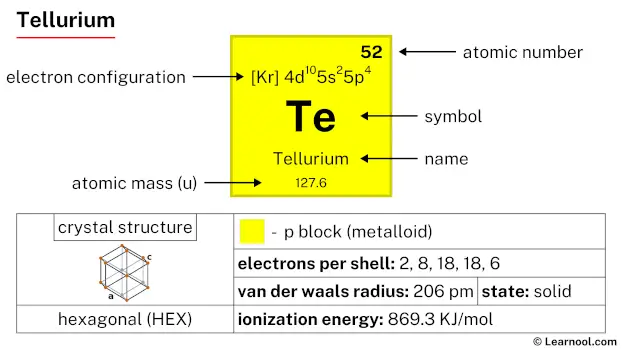 Tellurium |
53 I 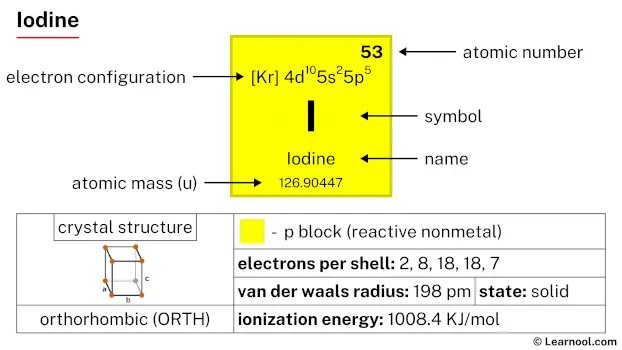 Iodine |
54 Xe 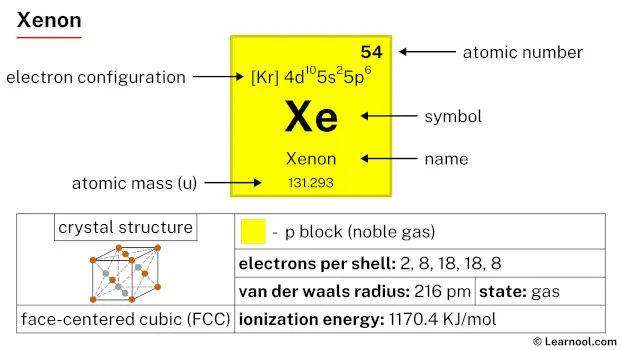 Xenon |
|
| 6 | 55 Cs 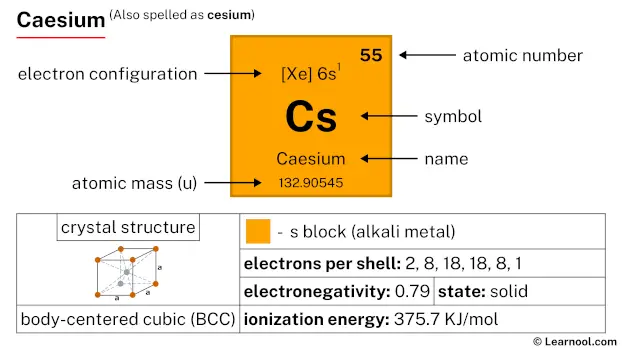 Caesium |
56 Ba 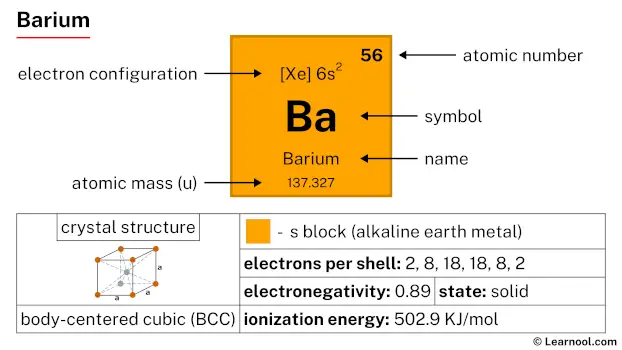 Barium |
72 Hf 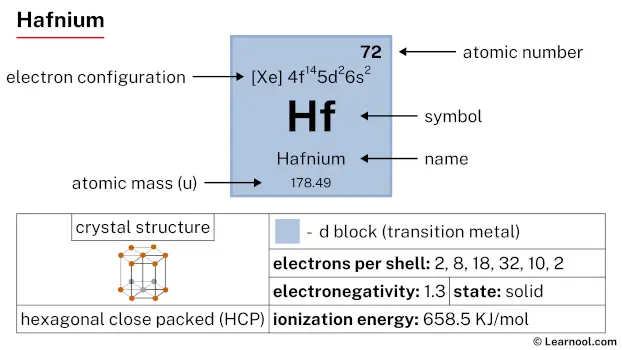 Hafnium |
73 Ta 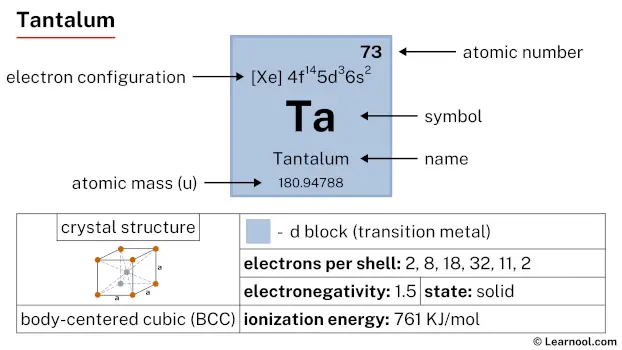 Tantalum |
74 W 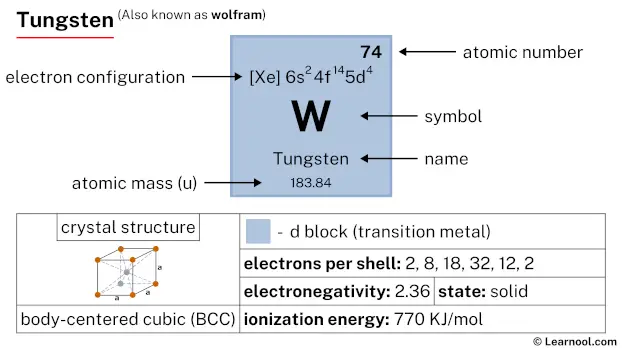 Tungsten |
75 Re 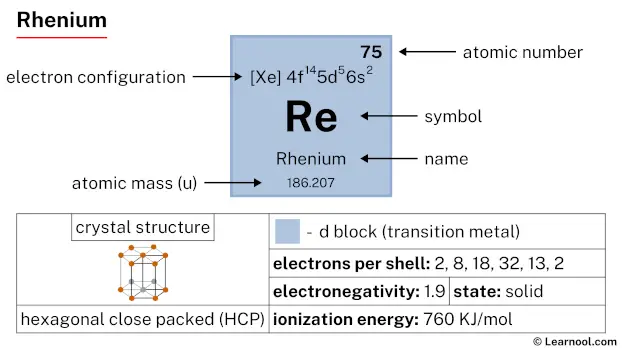 Rhenium |
76 Os 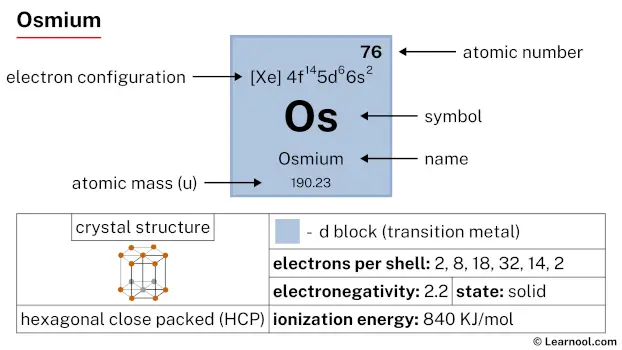 Osmium |
77 Ir 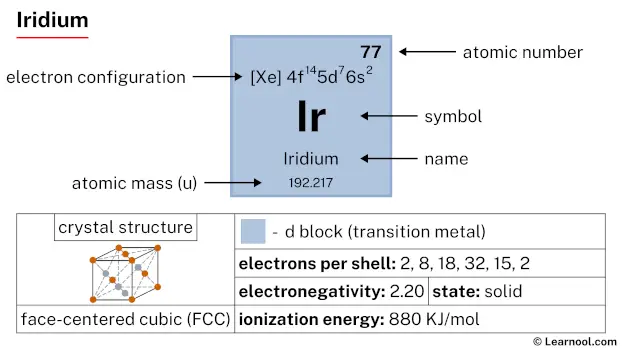 Iridium |
78 Pt  Platinum |
79 Au  Gold |
80 Hg 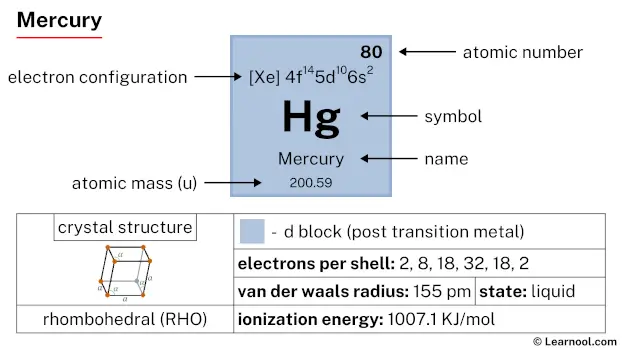 Mercury |
81 Tl 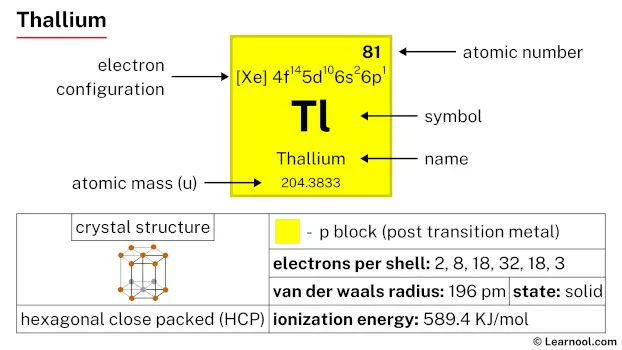 Thallium |
82 Pb  Lead |
83 Bi 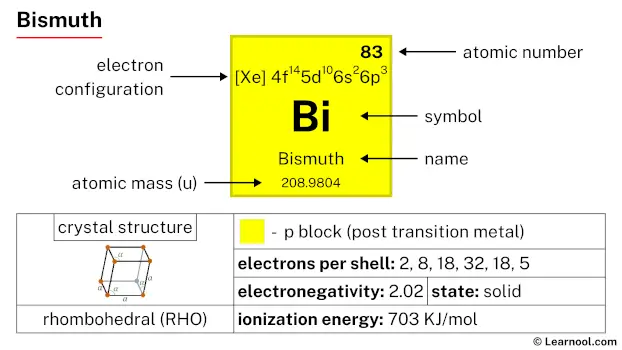 Bismuth |
84 Po 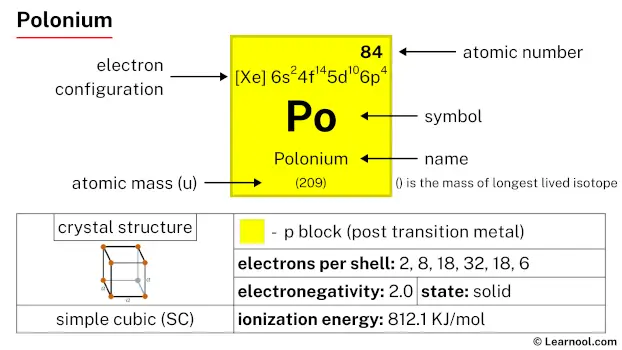 Polonium |
85 At 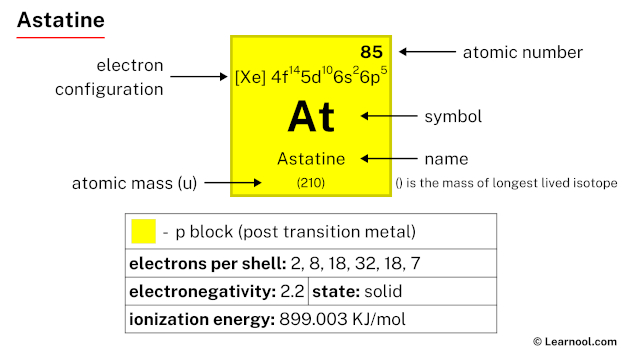 Astatine |
86 Rn 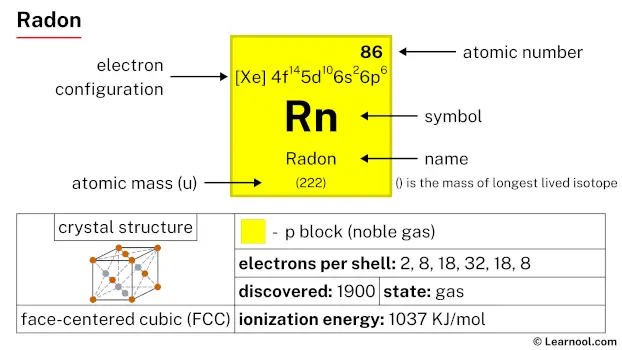 Radon |
||
| 7 | 87 Fr 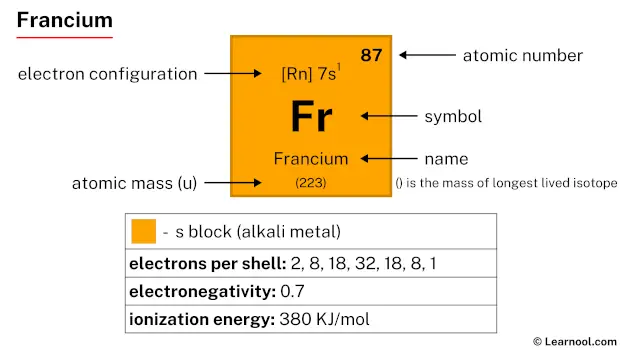 Francium |
88 Ra 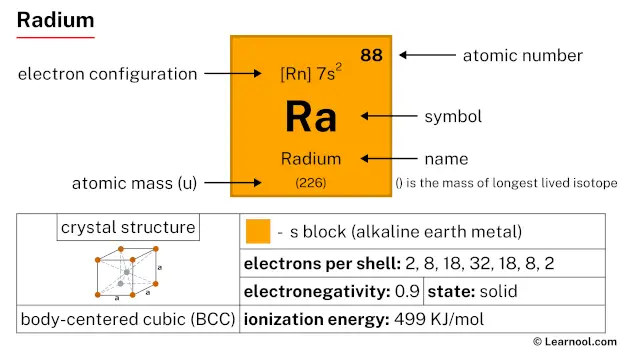 Radium |
104 Rf 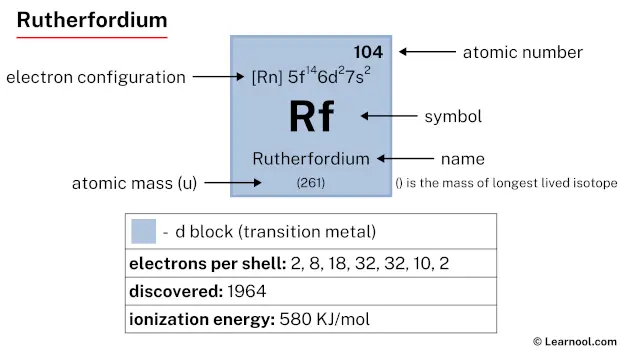 Rutherfordium |
105 Db 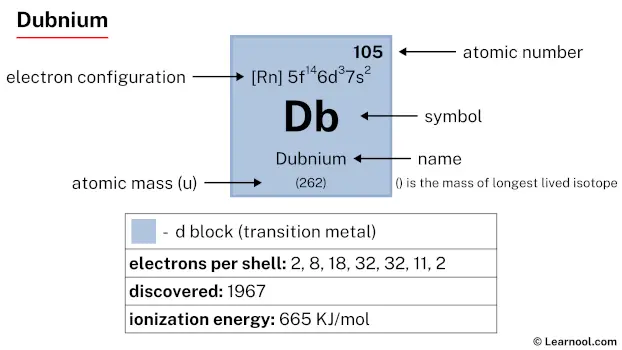 Dubnium |
106 Sg 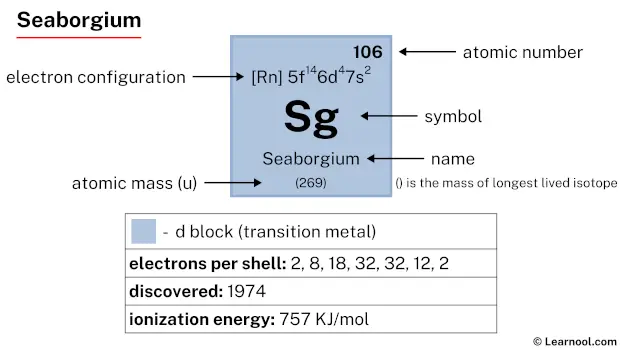 Seaborgium |
107 Bh 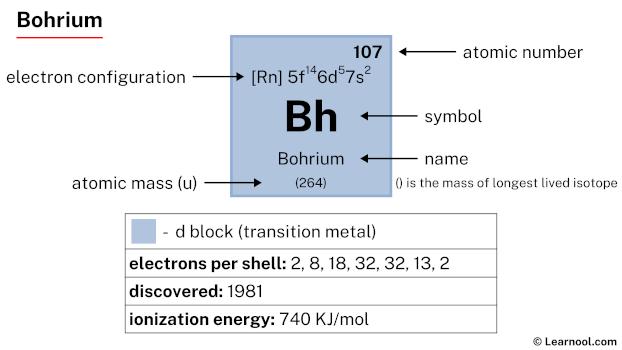 Bohrium |
108 Hs 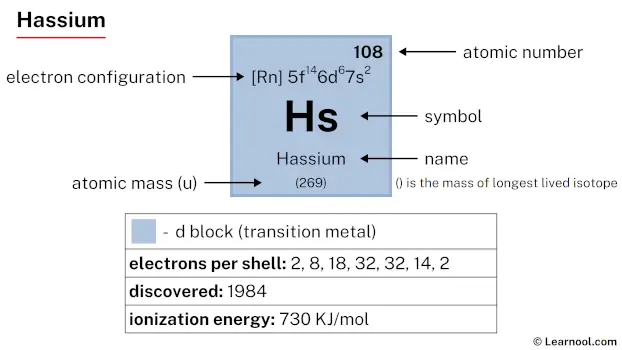 Hassium |
109 Mt 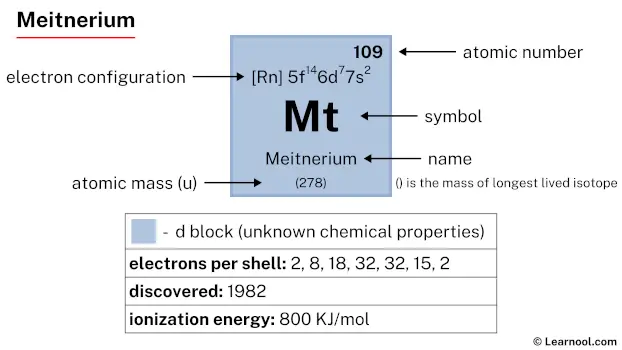 Meitnerium |
110 Ds 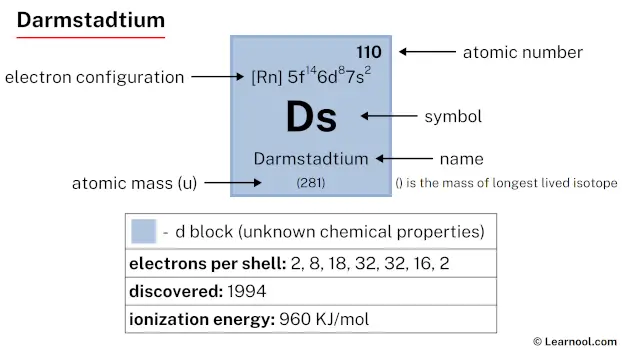 Darmstadtium |
111 Rg 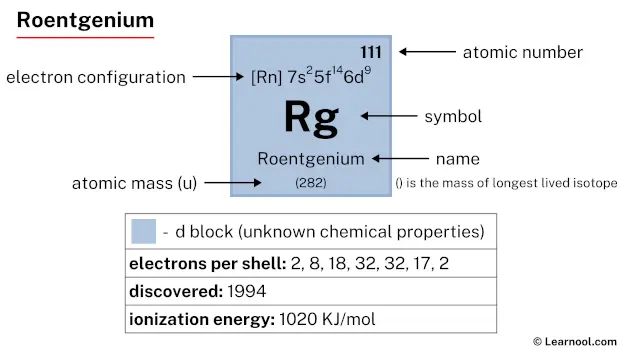 Roentgenium |
112 Cn  Copernicium |
113 Nh 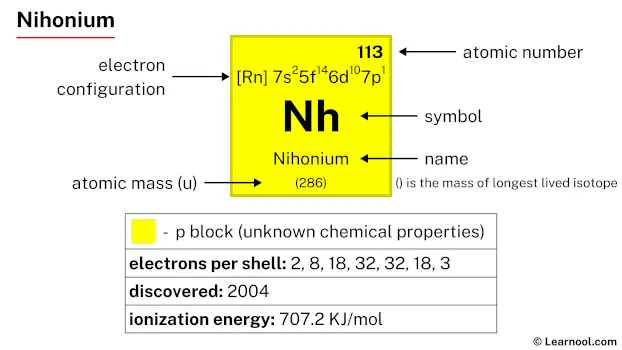 Nihonium |
114 Fl 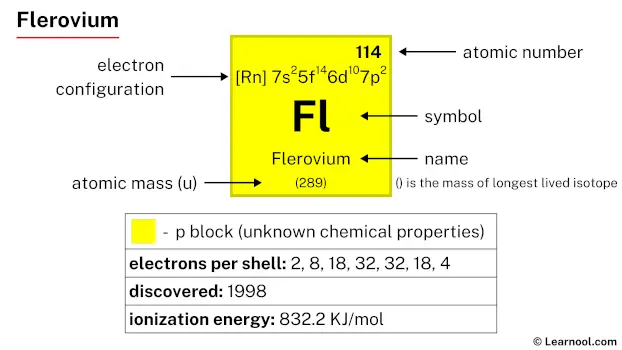 Flerovium |
115 Mc 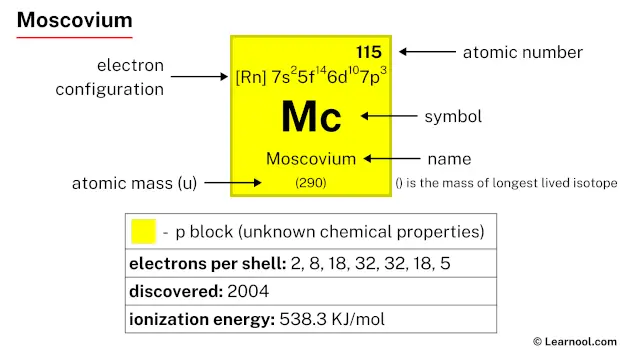 Moscovium |
116 Lv 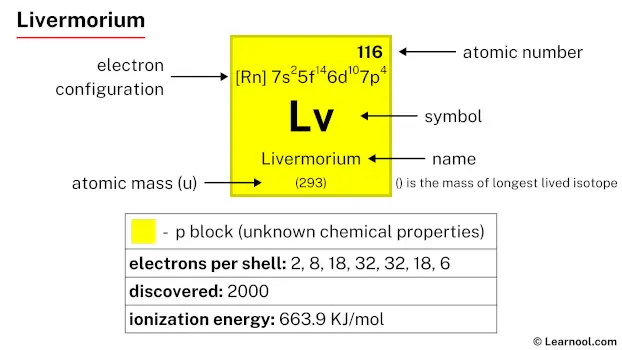 Livermorium |
117 Ts 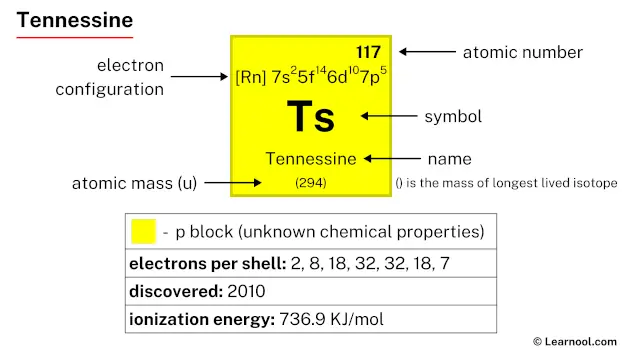 Tennessine |
118 Og 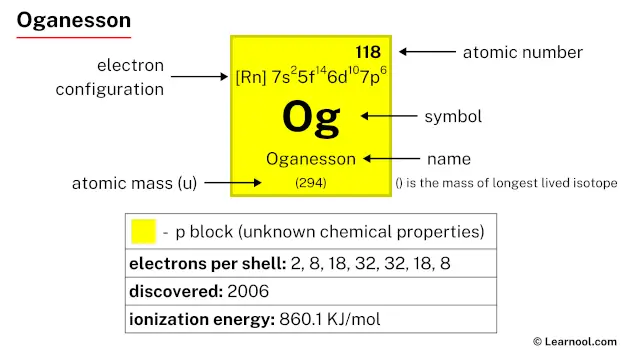 Oganesson |
||
| 57 La 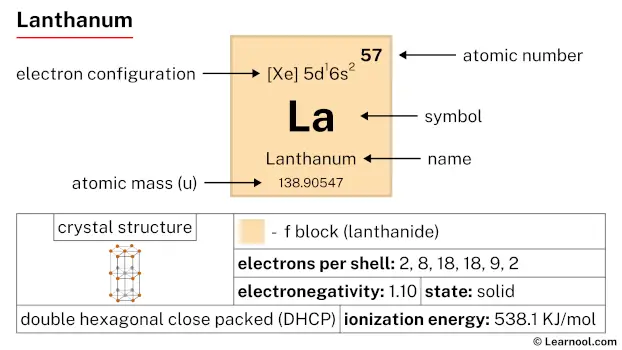 Lanthanum |
58 Ce 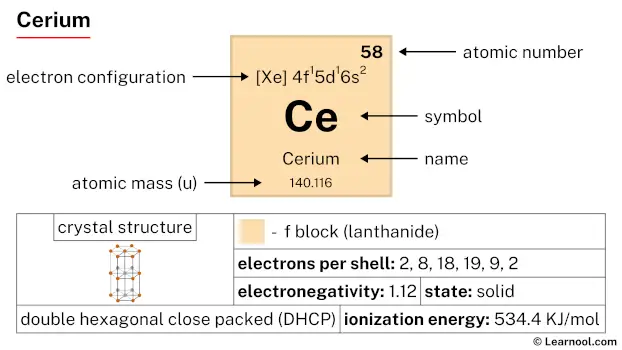 Cerium |
59 Pr 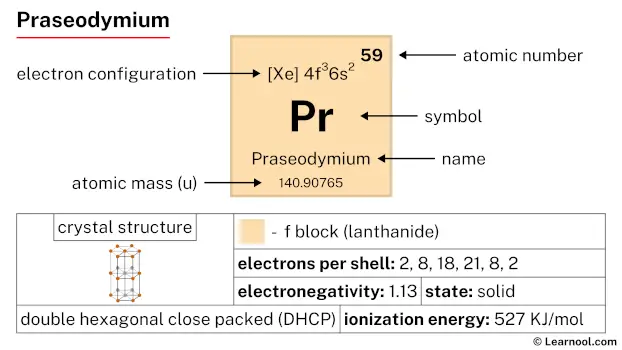 Praseodymium |
60 Nd 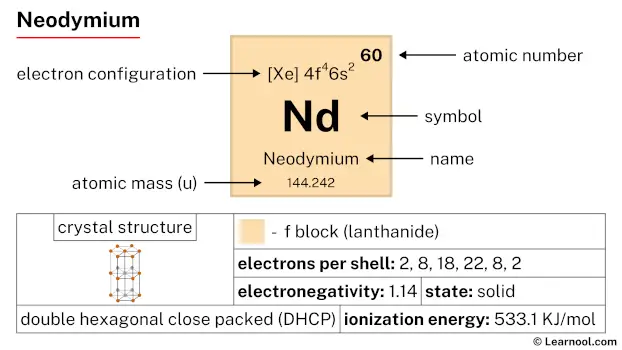 Neodymium |
61 Pm 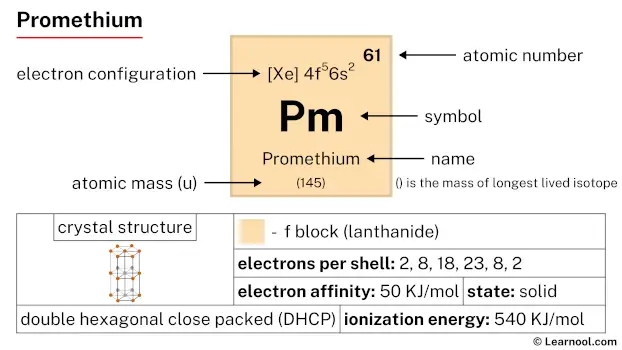 Promethium |
62 Sm 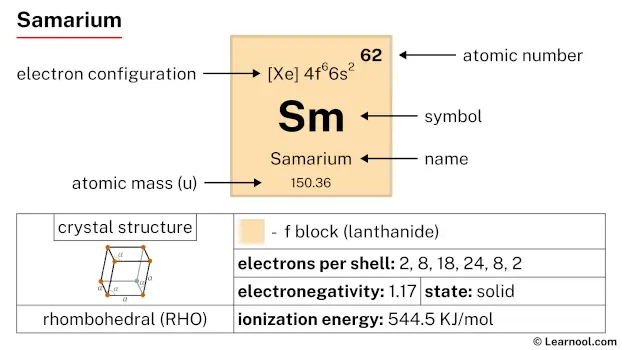 Samarium |
63 Eu 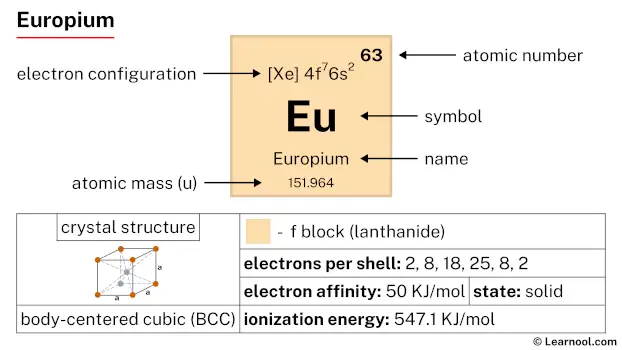 Europium |
64 Gd 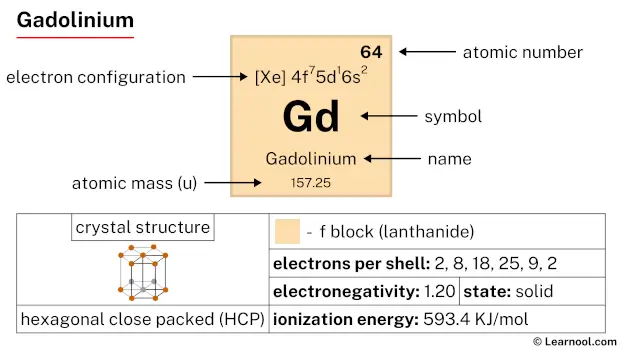 Gadolinium |
65 Tb 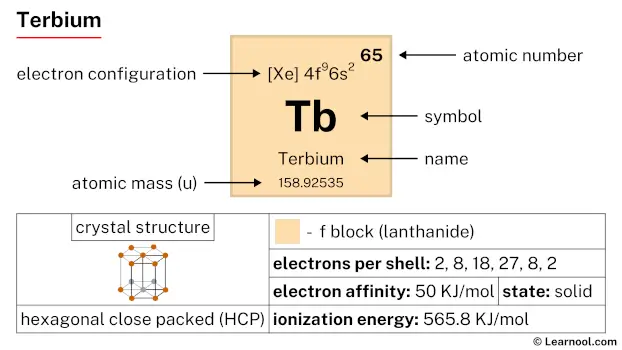 Terbium |
66 Dy 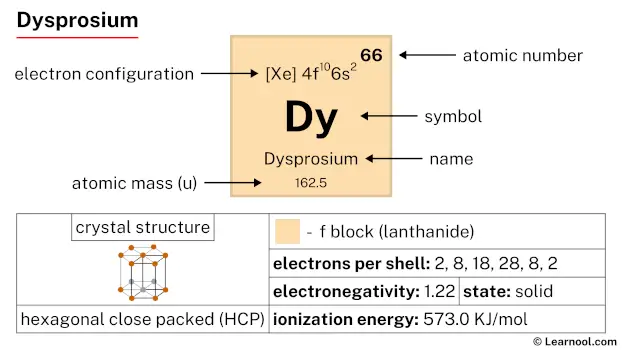 Dysprosium |
67 Ho 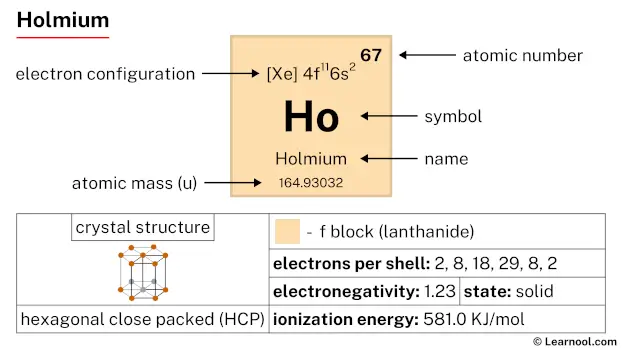 Holmium |
68 Er 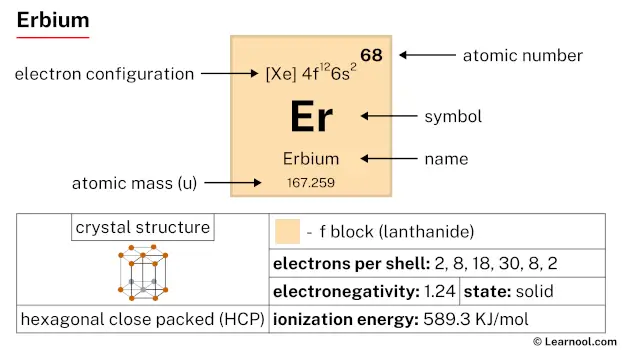 Erbium |
69 Tm 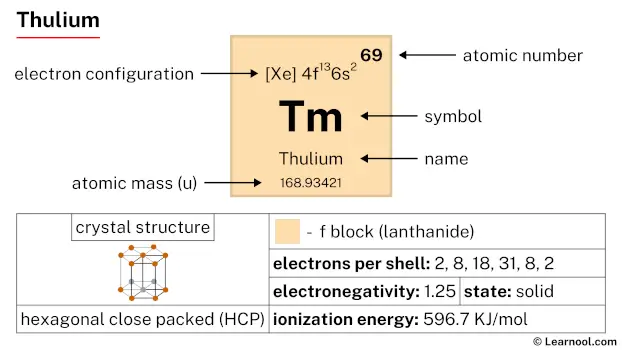 Thulium |
70 Yb 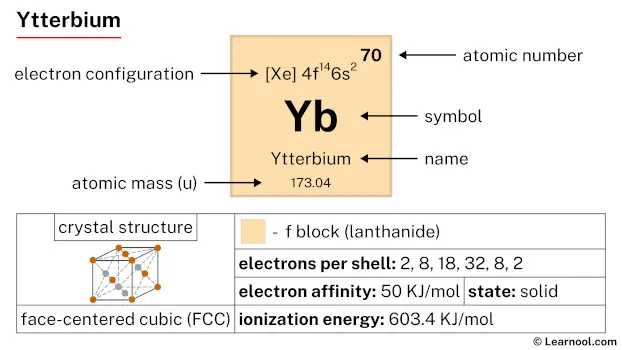 Ytterbium |
71 Lu 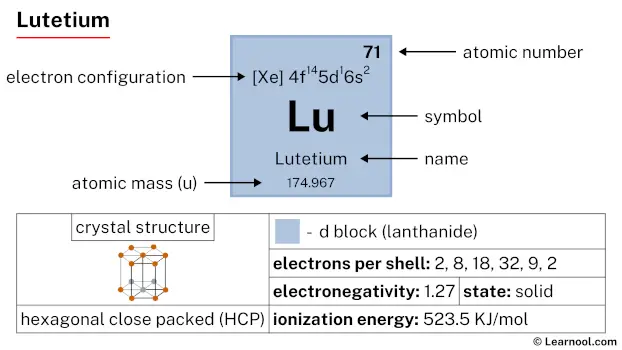 Lutetium |
|||||
| 89 Ac 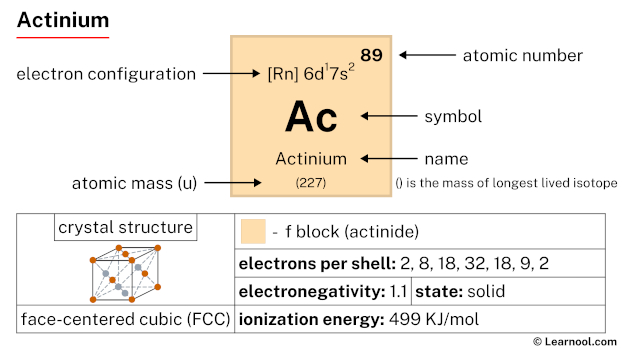 Actinium |
90 Th 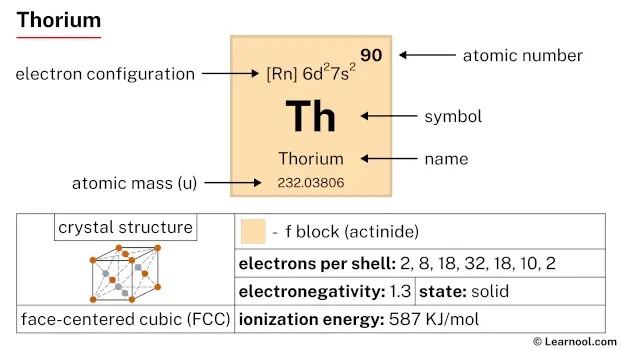 Thorium |
91 Pa 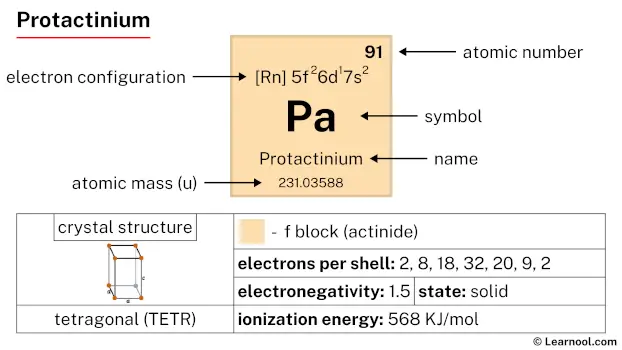 Protactinium |
92 U 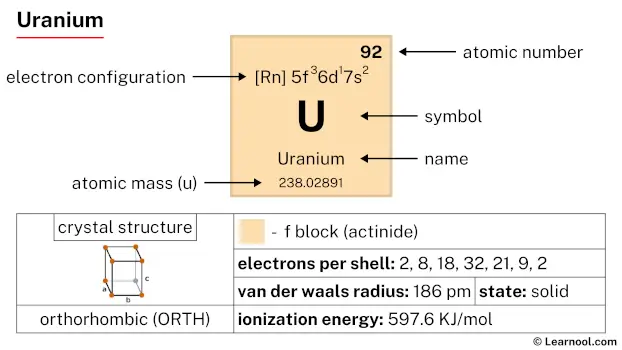 Uranium |
93 Np 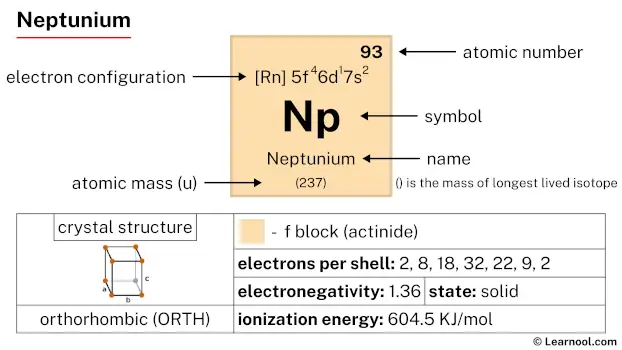 Neptunium |
94 Pu 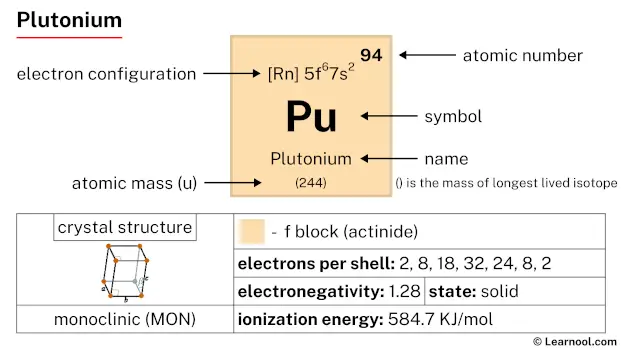 Plutonium |
95 Am  Americium |
96 Cm 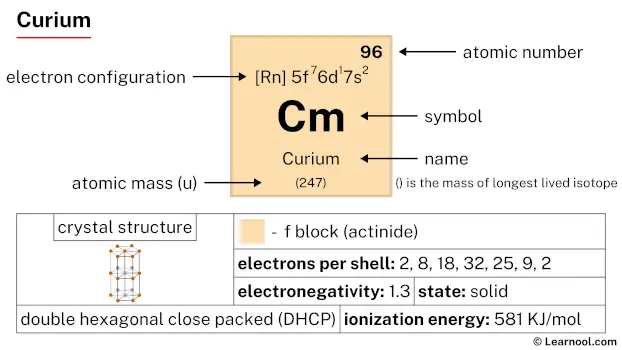 Curium |
97 Bk 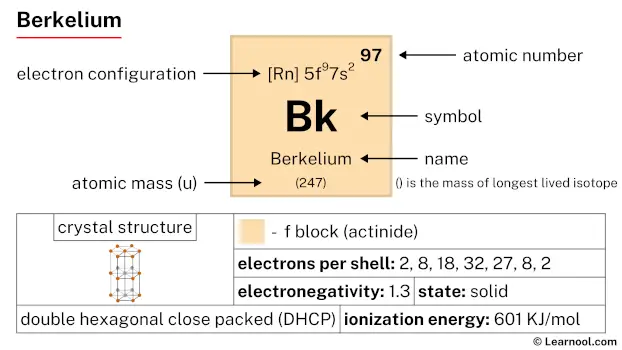 Berkelium |
98 Cf 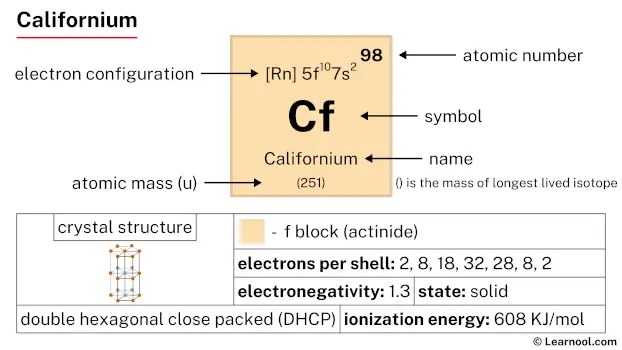 Californium |
99 Es 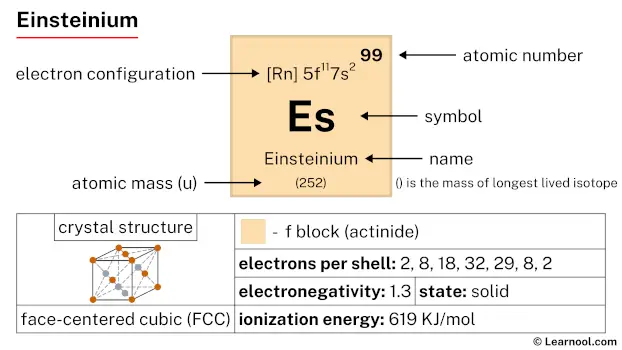 Einsteinium |
100 Fm 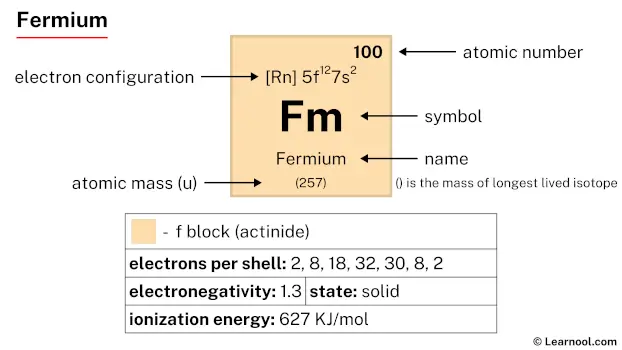 Fermium |
101 Md 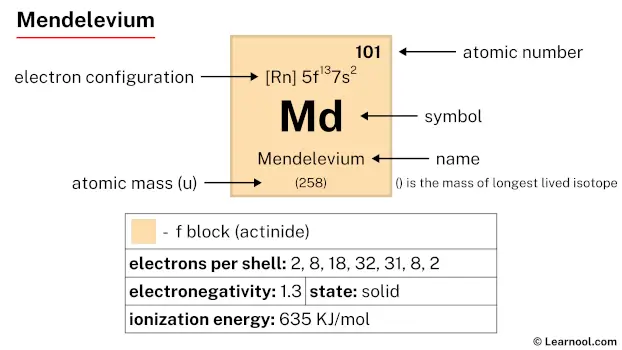 Mendelevium |
102 No 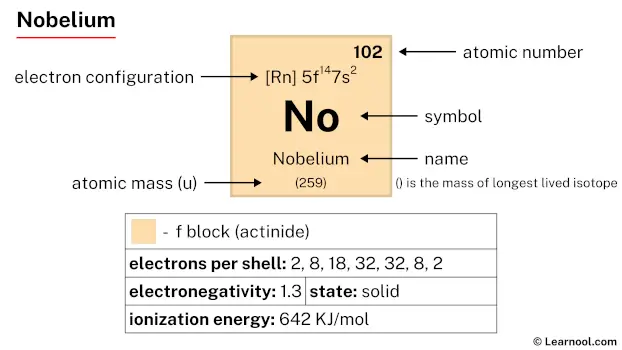 Nobelium |
103 Lr 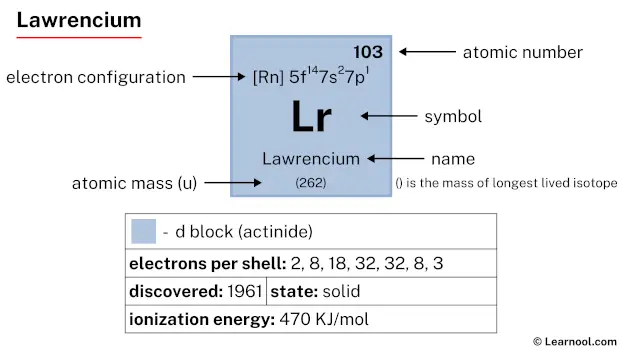 Lawrencium |
|||||
| – p block |
Chlorine is a p-block element, found in the seventeenth column and the third row of the periodic table. It has the atomic number 17 and is denoted by the symbol Cl.
Element information
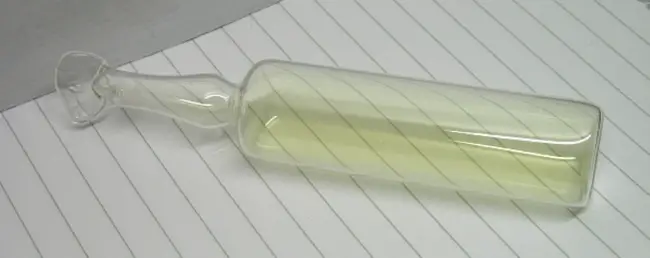 |
|
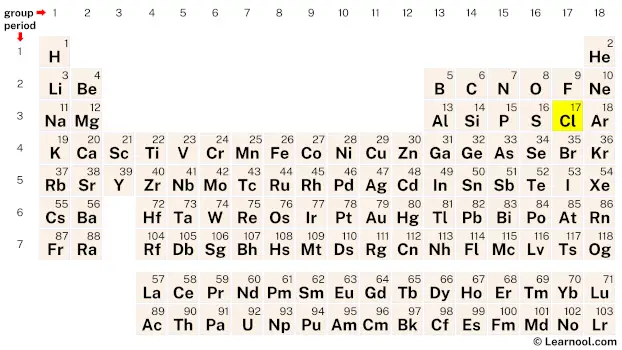 |
|
| Origin of name | Greek word “chloros” (which means greenish yellow) |
| Symbol | Cl |
| Atomic number (Z) | 17 |
| Atomic mass | 35.453 u |
| Block | p-block |
| Group | 17 (halogen) |
| Period | 3 |
| Classification | Reactive nonmetal |
| Covalent radius | 102±4 pm |
| Van der Waals radius | 175 pm |
| Melting point | -101.5 ℃, -150.7 ℉, 171.6 K |
| Boiling point | -34.04 ℃, -29.27 ℉, 239.11 K |
| Electron configuration | [Ne] 3s2 3p5 |
| Electrons per shell | 2, 8, 7 |
| Learn how to draw: Chlorine Bohr model | |
| Crystal structure | Orthorhombic |
| Phase at r.t | Gas |
| Density near r.t | 3.2 g/L |
| Main isotopes | Chlorine-35, Chlorine-37 |
| Natural occurrence | Primordial |
| Oxidation state | -1, +1, +3, +5, +7 |
| Electronegativity (Pauling scale) | 3.16 |
| Protons Neutrons Electrons |
17 18 17 |
| Learn how to find: Chlorine protons neutrons electrons | |
| Valence electrons | 7 |
| Learn how to find: Chlorine valence electrons | |
| CAS number | 7782-50-5 |
| Discovered by | Carl Wilhelm Scheele in 1774 |
History
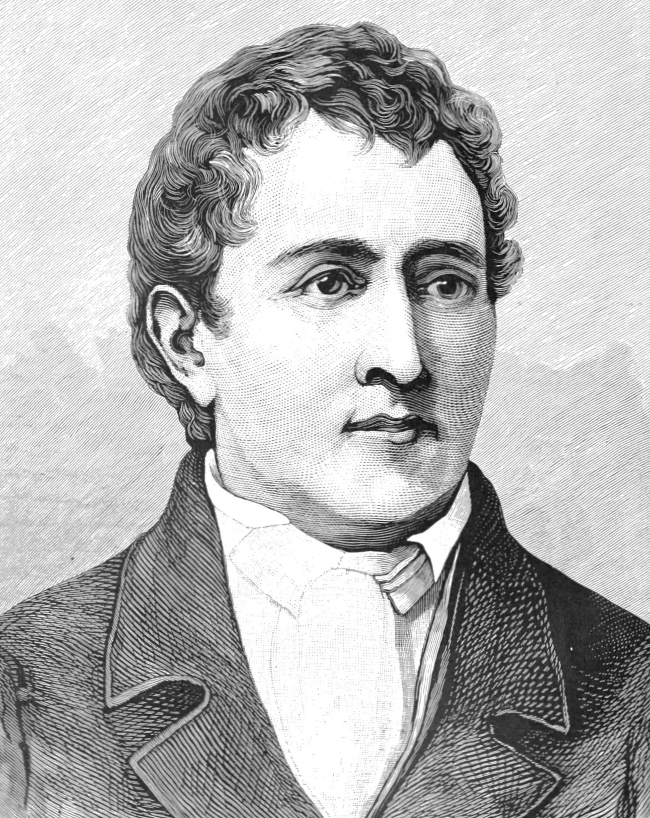
The most common compound of chlorine, sodium chloride, has been known since ancient times. Chlorine gas was first studied in detail in 1774 by Swedish chemist Carl Wilhelm Scheele, and he is credited with the discovery. Scheele produced chlorine by reacting MnO2 (as the mineral pyrolusite) with HCl. He observed several of the properties of chlorine: the bleaching effect on litmus, the deadly effect on insects, the yellow-green color, and the smell similar to aqua regia.
Common chemical theory at that time held that an acid is a compound that contains oxygen. So a number of chemists, including Claude Berthollet, suggested that Scheele’s dephlogisticated muriatic acid air must be a combination of oxygen and the yet undiscovered element, muriaticum. In 1810, Sir Humphry Davy tried the same experiment again, and concluded that the substance was an element, and not a compound. He announced his results to the Royal Society on 15 November that year. At that time, he named this new element “chlorine”, from the Greek word χλωρος (chlōros, “green-yellow”), in reference to its color. The name “halogen”, meaning “salt producer”, was originally used for chlorine in 1811 by Johann Salomo Christoph Schweigger.
In 1823, Michael Faraday liquefied chlorine for the first time, demonstrating that what was then known as “solid chlorine” had a structure of chlorine hydrate (Cl2 · H2O). Today, chlorine is widely used in various industries such as in the production of PVC plastics and other organic compounds. It is also used as a disinfectant in water treatment, swimming pools, and in the pharmaceutical industry. Its discovery and subsequent understanding have had a significant impact on chemistry and technology.
Occurrence
Chlorine is a highly reactive element and is not found naturally in its pure form in the environment. However, it is abundant in nature and is widely distributed throughout the Earth’s crust in the form of various compounds such as chlorides, chlorates, and perchlorates.
The most common source of chlorine is sodium chloride, also known as table salt, which is found in large deposits around the world. Chlorine can be extracted from salt using several methods, including the electrolysis of brine, which is a solution of sodium chloride in water.
Chlorine can also be found in other natural sources such as seawater, underground brine deposits, and certain minerals such as halite and sylvite. However, these sources are typically less economically viable for large-scale production of chlorine.
Production
Chlorine is produced industrially by the electrolysis of a solution of sodium chloride (NaCl), known as brine. In this process, brine is first purified to remove impurities such as calcium and magnesium ions that can interfere with the electrolysis. The purified brine is then fed into an electrolytic cell, where it is separated into its constituent ions under the influence of a direct electric current. Chlorine gas is produced at the anode while hydrogen gas is produced at the cathode. The process is carried out in a closed system to prevent the escape of toxic chlorine gas into the atmosphere.
Another method for producing chlorine is the oxidation of hydrogen chloride gas (HCl) using air or oxygen. The reaction produces chlorine gas and water vapor, as represented by the chemical equation: 4HCl + O2 → 2Cl2 + 2H2O. This process is also carried out in a closed system to prevent the release of chlorine gas into the atmosphere.
Both of these methods are widely used in industry to produce chlorine, which is an important industrial chemical used in the production of a wide range of products, including bleach, plastics, solvents, and PVC. Chlorine is also used in water treatment to disinfect drinking water and swimming pools, as well as in the manufacturing of pharmaceuticals, dyes, and textiles.
Properties
Physical properties
Chlorine is a yellow-green gas with a pungent odor.
It is heavier than air and can accumulate at low levels in poorly ventilated areas.
Chlorine has a melting point of -101.5 ℃ and a boiling point of -34.04 ℃.
It is not flammable but can support combustion.
Chemical properties
Chlorine is a highly reactive element and readily forms compounds with many other elements.
It has a strong tendency to gain one electron and form a chloride ion, which makes it a powerful oxidizing agent.
Chlorine is highly soluble in water and reacts with it to form hydrochloric acid and hypochlorous acid.
It reacts with most organic compounds and can cause significant damage to living tissue.
Toxicity
Chlorine gas is highly toxic and can cause severe respiratory irritation and damage to the eyes, skin, and mucous membranes.
Inhalation of high levels of chlorine gas can lead to pulmonary edema and death.
Contact with liquid chlorine can cause chemical burns and frostbite.
Other properties
Chlorine has a high electron affinity and is a good oxidizing agent.
It is used as a disinfectant in water treatment and in the production of a variety of chemicals, including PVC plastics and solvents.
Chlorine is used in the bleaching of paper and textiles.
It is an essential element for the human body and is used in the production of hydrochloric acid in the stomach.
Applications
Chlorine is commonly used in the treatment of drinking water and swimming pool water to disinfect and kill harmful microorganisms. It is also used to control algae and other organisms in water bodies.
Chlorine is a key raw material for the production of a wide range of chemicals such as PVC, solvents, bleach, and chloromethanes.
Chlorine compounds such as chloramines and chlorhexidine are used as disinfectants and antiseptics in the healthcare industry.
Chlorine is used to disinfect surfaces and equipment in food processing plants to ensure food safety.
Chlorine is used in the production of various petrochemicals such as ethylene dichloride, vinyl chloride, and chlorinated solvents.
Chlorine compounds such as chlorine dioxide and hypochlorite are used in the bleaching of paper pulp.
Chlorine is used in the production of synthetic fibers such as nylon and polyester.
Chlorine-based refrigerants such as chlorofluorocarbons (CFCs) were widely used in refrigeration and air conditioning systems before being phased out due to their harmful effects on the ozone layer.
Interesting facts
The name “chlorine” comes from the Greek word “chloros,” meaning “green-yellow.” This is because chlorine gas has a greenish-yellow color.
Chlorine is the second lightest halogen after fluorine, and is a highly reactive element.
Chlorine was first used as a disinfectant in the 19th century to help prevent the spread of cholera and other waterborne diseases.
Chlorine is essential for the production of PVC (polyvinyl chloride), which is used in a wide range of products including pipes, flooring, and electrical cable insulation.
Chlorine gas was used as a chemical weapon during World War Ⅰ, causing widespread damage and fatalities.
Chlorine is also used in the production of bleach, which is used for cleaning and disinfecting.
Chlorine is highly toxic and can be fatal if ingested or inhaled in large amounts. It is important to handle chlorine with care and to follow proper safety procedures when working with this chemical.
Related
More elements
External links
- https://www.rsc.org/periodic-table/element/17/chlorine
- https://www.britannica.com/science/chlorine
- https://pubchem.ncbi.nlm.nih.gov/element/Chlorine
- https://en.wikipedia.org/wiki/Chlorine
- https://chemistrytalk.org/chlorine-element/
- https://www.chemicool.com/elements/chlorine.html
- https://www.ducksters.com/science/chemistry/chlorine.php
- https://education.jlab.org/itselemental/ele017.html
- https://www.thoughtco.com/chlorine-element-facts-606518
Deep
Learnool.com was founded by Deep Rana, who is a mechanical engineer by profession and a blogger by passion. He has a good conceptual knowledge on different educational topics and he provides the same on this website. He loves to learn something new everyday and believes that the best utilization of free time is developing a new skill.
